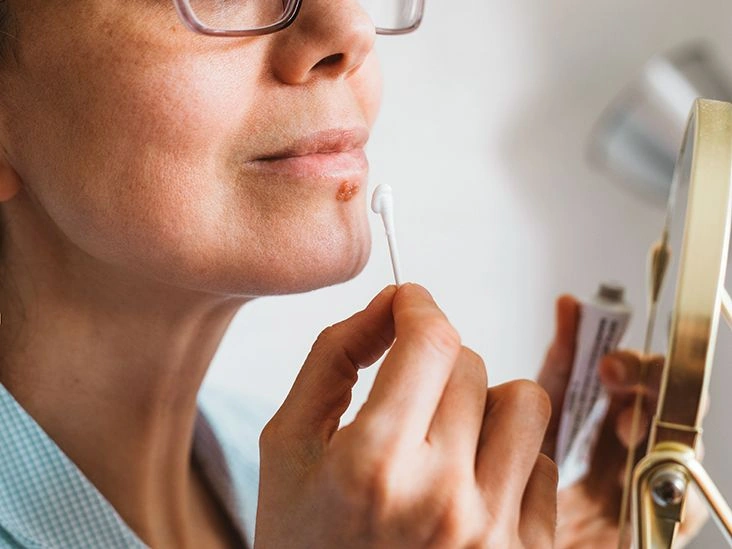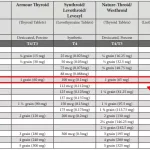Conditions such as acne, keloids, allergic reactions, and shingles can produce raised bumps on the skin. Bumps may also signal more serious illnesses that need professional attention, including MRSA, cellulitis, or cancer.
Raised skin bumps are common and, in many instances, harmless. Their appearance and quantity vary depending on the cause.
Bumps may match your skin tone or be a different color. They can be itchy, large, or tiny. Some are firm, while others are soft and moveable.
Most bumps don’t need medical treatment. Still, you should consult a healthcare provider if they cause significant discomfort—such as burning pain or persistent itching—or if you’re worried about changes in their appearance or the overall condition of your skin.
WarningGraphic images ahead

Growths
Bulla

- a clear, watery blister filled with fluid larger than 1 centimeter (cm)
- if the clear fluid becomes milky, an infection may be present
Bullae (the plural of bulla) are raised, fluid-filled lesions that can form from friction or conditions like contact dermatitis and chickenpox. They often resolve within about a week, but you should see a clinician if they become infected or require drainage.
Learn more about fluid-filled blisters.
Cherry angioma

- can appear anywhere but are most frequent on the trunk, arms, legs, and shoulders
- small, bright red or purple round or oval spots that may be flat or slightly raised
- may bleed if irritated or scratched
- generally benign but may be removed if they’re problematic
Cherry angiomas are common benign skin growths that develop when tiny blood vessels cluster together, producing a bright-red bump on or under the skin. They tend to appear more often with age, commonly beginning in middle adulthood.
Corns and calluses

- localized circles of thickened skin often with a painful, horn-like hardened center
- commonly on the tops and sides of toes and on the soles of the feet
- can also appear on the hands
Corns and calluses are rough, thickened patches of skin caused by repeated pressure or friction. They most frequently appear on the hands and feet.
Learn how to treat corns at home.
Cyst

- a slow-growing lump beneath the skin with a smooth surface
- can range from small to large and is usually painless
- typically not problematic unless infected, very large, or in a sensitive area
- some develop deep inside the body where they’re not visible or palpable
Cysts are sacs that hold fluid, air, or other material. They form under the skin anywhere on the body and feel like small movable nodules.
Explore how home remedies may help with cysts.
Keloids

- forms at the location of a prior injury
- a lumpy or firm patch of skin that may be painful or itchy
- the area may be flesh-toned, pink, or red
Keloids are raised, smooth growths that develop around scars, commonly on the chest, shoulders, and cheeks. They resemble hypertrophic scars but can extend well beyond the original wound’s borders.
Find ways to reduce the appearance of keloids.
Lipoma

- soft when touched and moves easily under the finger
- small, just beneath the skin, often pale or colorless
- commonly found on the neck, back, or shoulders
- only painful if it compresses a nerve
Lipomas are benign collections of fatty tissue beneath the skin and are generally painless. They commonly occur on the neck, back, or shoulders and can be removed for cosmetic reasons or if they cause pain.
Learn more about lipoma removal surgery.
Nodule

- a small to medium-sized growth that may contain tissue, fluid, or both
- often broader than a pimple and can present as a firm, smooth elevation beneath the skin
- generally benign but can be uncomfortable if they press on nearby structures
- may also form deep inside the body where they aren’t visible or palpable
Nodules arise from abnormal tissue growth and commonly occur in areas like the armpits, groin, and head and neck regions.
Seborrheic keratosis

- round or oval, dark-colored lesion with a “stuck-on” look
- can appear anywhere except the palms and soles
- raised and bumpy with a waxy texture
- may be skin-colored, brown, or black
Seborrheic keratoses are common, benign growths usually seen in older adults. They present as rough, round spots on the skin surface and can affect areas like the chest, shoulders, and back.
Learn how to distinguish seborrheic keratosis from melanoma.
Skin tags

- small skin growths that can reach up to a half-inch in length
- may be the same shade as your skin or slightly darker
- most often caused by friction
- commonly found near the neck, armpits, breasts, groin, abdomen, or eyelids
Skin tags are tiny, soft flaps of skin that frequently develop on the neck or in skin folds like the armpits. They may match your skin color or be a bit darker.
See how moles differ from skin tags.
Strawberry nevus

- a red or purplish raised birthmark often on the face, scalp, back, or chest
- appears at birth or in early infancy
- typically shrinks or fades as the child grows
Strawberry nevus, also called a hemangioma, is a red birthmark common in infants that usually diminishes or disappears by around age 10.
Infections
Some bacterial and viral infections produce skin bumps. While some resolve on their own, others will worsen without diagnosis and treatment.
Boils

- bacterial or fungal infection of a hair follicle or oil gland
- can develop anywhere but commonly on the face, neck, armpit, and buttocks
- red, painful raised bump often with a yellow or white center
- may rupture and ooze fluid
Boils (furuncles) are infected hair follicles that appear as painful, red swellings. They often resolve after they drain and release pus.
Learn whether you should pop a boil at home.
Chickenpox

- clusters of itchy, red, fluid-filled blisters in varying stages of healing across the body
- often accompanied by fever, achiness, sore throat, and loss of appetite
- contagious until all blisters have crusted over
Chickenpox is a common viral infection in children marked by red, itchy bumps that spread across the body. Adults can also get chickenpox and usually have more severe symptoms.
Find out about the varicella vaccine for chickenpox prevention.
Cold sore

- red, painful fluid-filled blister that forms near the mouth or lips
- the area often tingles or burns before the sore appears
- may come with mild flu-like symptoms such as low fever, body aches, and swollen lymph nodes
Cold sores come from reactivation of the herpes simplex virus and show up as red, fluid-filled blisters around the mouth and face. They’re most contagious when open but can still spread when they’ve crusted.
Learn about triggers for the virus that causes cold sores.
Impetigo

- common in infants and young children
- irritating rash with fluid-filled blisters that break easily and form a honey-colored crust
- often appears around the mouth, chin, and nose
Impetigo is a highly contagious bacterial skin infection common among children. Adults typically contract it through close skin-to-skin contact.
Discover natural home remedies for impetigo.
Molluscum contagiosum

- bumps that may appear in clusters of up to 20
- small, shiny, smooth lesions
- flesh-colored, white, or pink
- firm, dome-shaped with a central dimple
Molluscum contagiosum is usually a harmless viral skin infection producing small, flesh-toned bumps that spread through direct contact. It’s most commonly seen in children, though adults can get it too.
Learn how molluscum contagiosum spreads and how to prevent it.
MRSA (staph) infection

This condition is a medical emergency. You may require urgent care.
- a skin infection that can resemble a spider bite, often a painful, raised red bump that may discharge pus
- requires potent antibiotics and can progress to cellulitis or bloodstream infection
An MRSA infection is caused by a strain of Staphylococcus bacteria that’s resistant to many antibiotics. These bacteria commonly reside on the skin but can cause infection if they enter via cuts or abrasions.
Learn what to expect as a staph infection heals.
Scabies

- symptoms may take 4–6 weeks to appear
- intensely itchy rash that can be pimply, blistered, or scaly
- raised white or skin-colored lines
Scabies is caused by infestation with the tiny mite Sarcoptes scabiei, producing an itchy, pimple-like rash. Without treatment, mites can remain on the skin for several weeks.
Discover home remedies for scabies.
Wart

- may occur on the skin or mucous membranes
- can appear singly or in clusters
- may be skin-colored, pink, or slightly brown
Warts are raised, rough growths caused by human papillomavirus (HPV). They usually form on the hands and feet. See a clinician if they appear on the face or other sensitive areas, as they’re contagious and can spread HPV to others.
Discover home remedies for warts.
Skin cancer
Some skin cancers present as raised bumps. There are several types, and all require medical evaluation and treatment.
Actinic keratosis

- usually under 2 cm, roughly the size of a pencil eraser
- thick, scaly, or crusty patch that can itch or burn
- occurs on sun-exposed areas (hands, arms, face, scalp, neck)
- often pink but can have brown, tan, or gray tones
Actinic keratosis is a precancerous lesion typically caused by long-term sun exposure. It’s more common in older adults and people with lighter skin.
Learn how actinic keratosis differs from seborrheic keratosis.
Basal cell carcinoma

- raised, firm, pale areas that can look like a scar
- shiny, dome-like, pearly areas that may have a central depression
- may be pink, red, or otherwise discolored
- visible tiny blood vessels on the lesion
- bleeds or oozes easily and may not heal or may recur after healing
Basal cell carcinoma arises from cells in the lower epidermis and often produces bumps that may bleed in early stages. It’s the most common form of skin cancer and generally has a high survival rate.
Learn more about Mohs surgery, a common treatment for basal cell carcinoma.
Squamous cell carcinoma

- frequently appears on the face, ears, and backs of the hands
- begins as a scaly, red patch that progresses to a raised bump and continues to enlarge
- a growth that bleeds easily and fails to heal, or heals and then returns
Squamous cell carcinoma starts in squamous cells in the outer skin layer and causes scaly red patches and raised sores, often in sun-exposed regions.
Learn about the various kinds of nonmelanoma skin cancer.
Melanoma

- a mole anywhere on the body with irregular edges, asymmetry, and multiple colors
- a mole that has changed color or grown over time
- often larger than a pencil eraser
Melanoma is the least frequent but most dangerous form of skin cancer. It begins with an atypical mole that’s often asymmetrical, multicolored, and large with irregular borders. Melanoma can occur anywhere on the body.
See more images of melanoma.
Other causes of skin bumps
Allergic reactions to foods, pollen, dust mites, and other triggers can cause hives—raised welts that may be skin-colored or slightly red. Hives can range from tiny to large and tend to be itchy and clustered.
Ringworm, a fungal infection, can produce a raised, ring-shaped rash and requires medical antifungal treatment.
Cellulitis is another possibility: it causes a swollen, discolored, painful rash that spreads and is due to bacterial infection—this is considered a medical emergency.
When to see a doctor about raised skin bumps
Although most skin bumps are benign, see a doctor if you:
- have bumps that persist for a long time
- experience significant pain or discomfort
- cannot identify the cause of the bumps
- notice a growth changing in color, shape, or size
- have lesions that ooze or bleed
A healthcare provider will do a physical exam and inspect the bumps. Expect questions about the bumps, your medical history, and your lifestyle.
The doctor might perform a skin biopsy to determine whether a bump is cancerous. This involves removing a small tissue sample from the affected area for laboratory analysis. Based on results, you may be referred to a dermatologist or other specialist for further care.
Treatment for raised skin bumps
Removal
Treatment depends on the underlying cause. Many bumps are harmless and won’t require intervention. However, you may choose removal for cosmetic reasons or if they cause symptoms.
Dermatologists can remove skin tags or warts by freezing them. They also surgically excise some bumps, such as cysts and lipomas.
Some itchy or bothersome bumps may respond to topical ointments and creams.
If a bump is cancerous or precancerous, physicians typically remove it entirely. Regular follow-up visits will be needed so clinicians can monitor the area and ensure the cancer does not recur.
Medication
When further medical therapy is necessary, a doctor will prescribe medications to treat the bump and its underlying cause.
Bacterial infections like MRSA require antibiotics. For viral infections such as chickenpox, supportive over-the-counter remedies and home care are often recommended.
Some viral illnesses, like herpes, cannot be cured, but doctors can prescribe medications to reduce symptoms.
Takeaway
Most raised skin bumps stem from benign, temporary conditions that don’t need treatment. If bumps result from an infection or a chronic issue, prompt medical care usually helps clear them or relieve symptoms.
When a bump is cancerous, early detection and treatment by healthcare professionals improve outcomes.


















Leave a Reply
You must be logged in to post a comment.